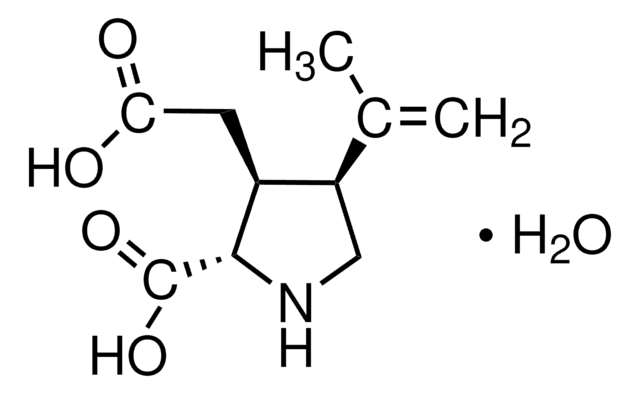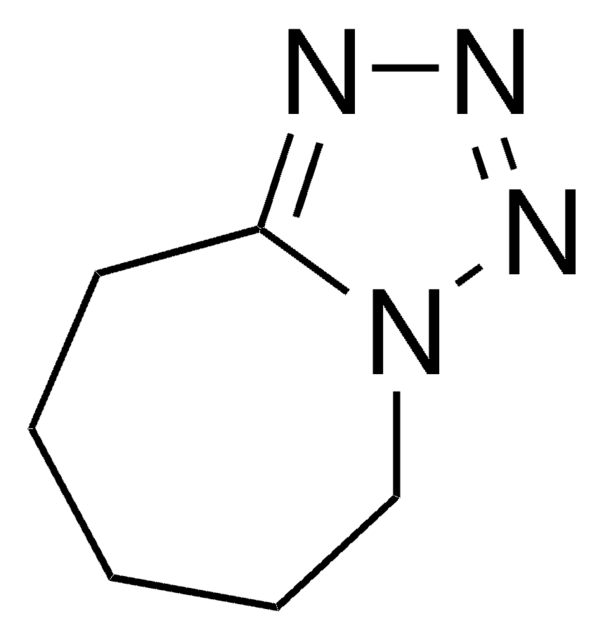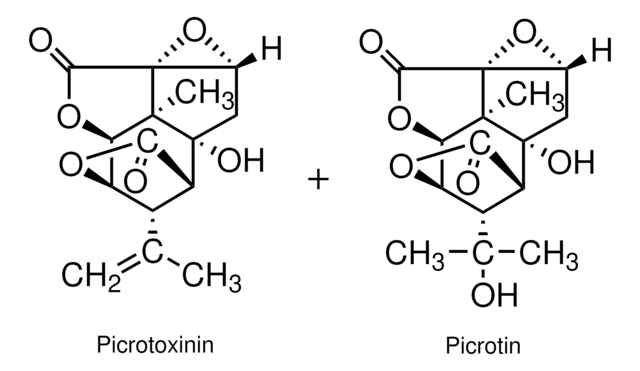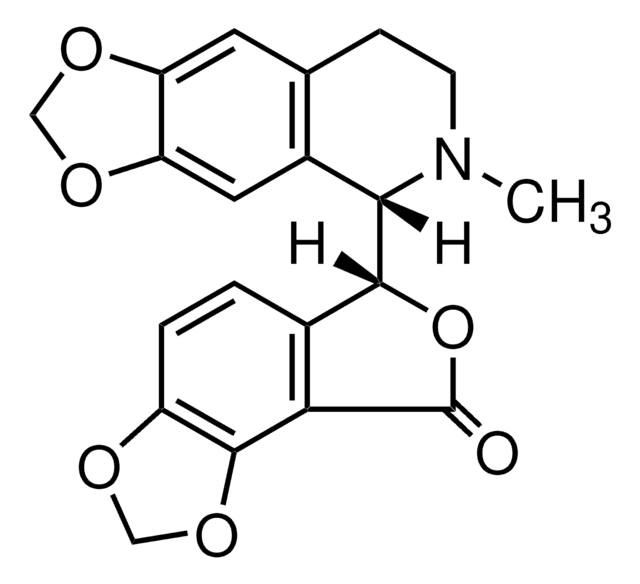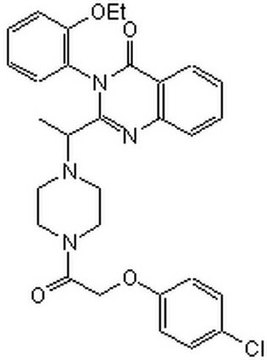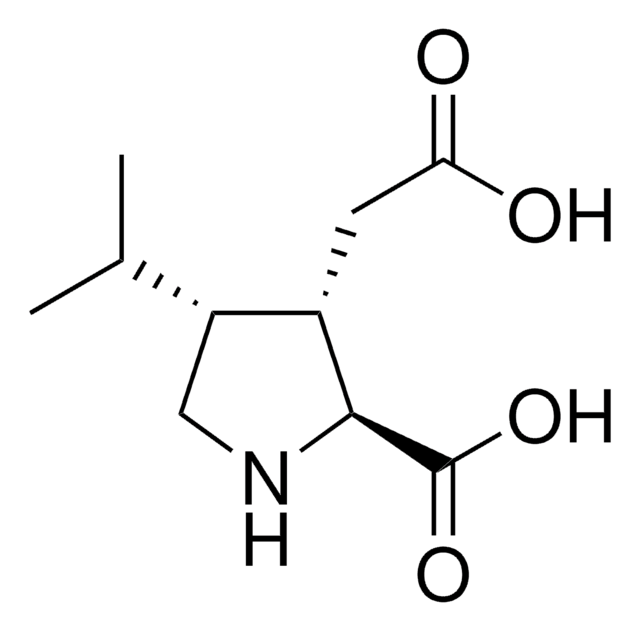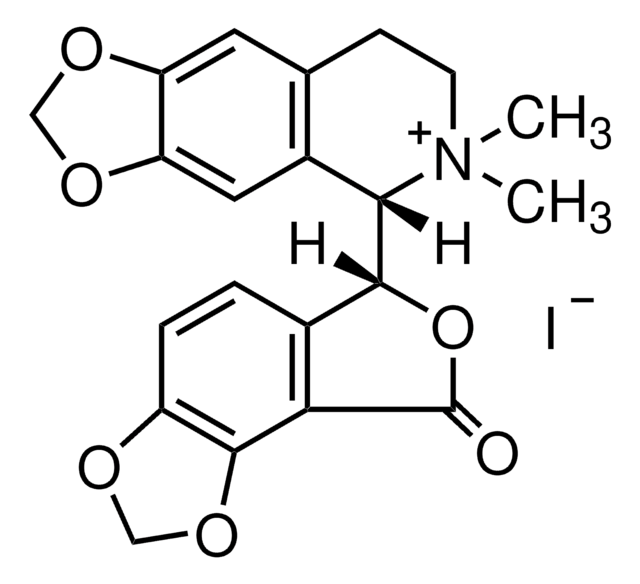420318
Kainic Acid
≥98% (HPLC), solid, amino acid receptor agonist, Calbiochem®
Synonym(s):
Kainic Acid, 2-Carboxy-4-(1-methylethenyl)-3-pyrrolidineacetic Acid
About This Item
Recommended Products
Product Name
Kainic Acid, An excitatory amino acid receptor agonist selective for the kainate receptor subtype (Ki = 21 nM for ³H-kainate binding in rat striatum).
Quality Level
description
Merck USA index - 14, 5276
Assay
≥98% (HPLC)
form
solid
manufacturer/tradename
Calbiochem®
storage condition
OK to freeze
color
off-white
solubility
dilute base: 10 mg/mL
water: 10 mg/mL
shipped in
ambient
storage temp.
2-8°C
SMILES string
[N+H2]1[C@@H]([C@H]([C@H](C1)C(=C)C)CC(=O)O)C(=O)[O-]
InChI
1S/C10H15NO4/c1-5(2)7-4-11-9(10(14)15)6(7)3-8(12)13/h6-7,9,11H,1,3-4H2,2H3,(H,12,13)(H,14,15)/t6-,7+,9-/m0/s1
InChI key
VLSMHEGGTFMBBZ-OOZYFLPDSA-N
General description
Biochem/physiol Actions
Kainate receptor subtype
Warning
Other Notes
Watkins, J.C. and Evans, R.H. 1981. Annu. Rev. Pharmacol. Toxicol. 21, 165.
Legal Information
Storage Class Code
11 - Combustible Solids
WGK
WGK 3
Flash Point(F)
Not applicable
Flash Point(C)
Not applicable
Certificates of Analysis (COA)
Search for Certificates of Analysis (COA) by entering the products Lot/Batch Number. Lot and Batch Numbers can be found on a product’s label following the words ‘Lot’ or ‘Batch’.
Already Own This Product?
Find documentation for the products that you have recently purchased in the Document Library.
Our team of scientists has experience in all areas of research including Life Science, Material Science, Chemical Synthesis, Chromatography, Analytical and many others.
Contact Technical Service